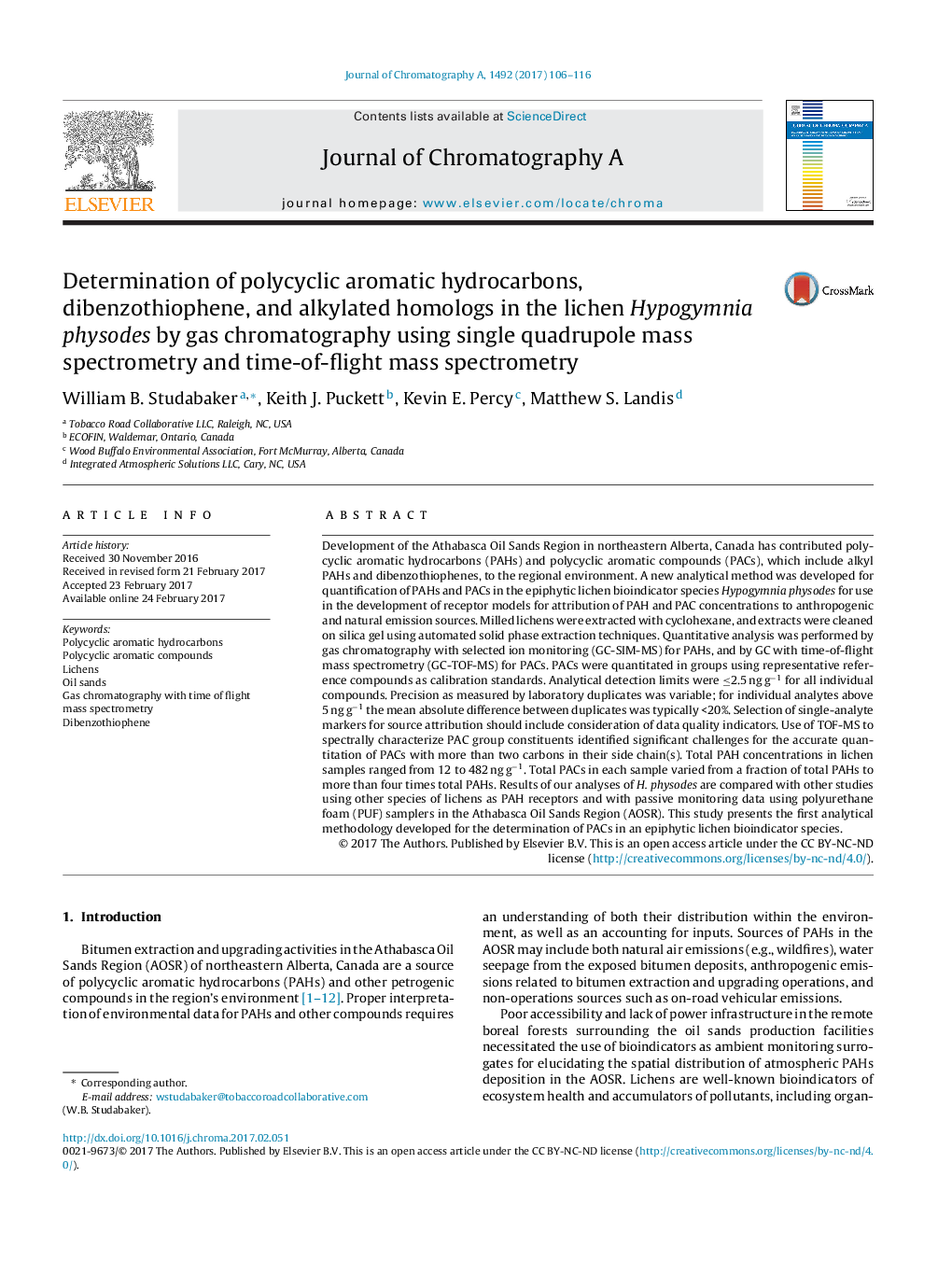| Article ID | Journal | Published Year | Pages | File Type |
|---|---|---|---|---|
| 5135599 | Journal of Chromatography A | 2017 | 11 Pages |
â¢A method for determining PAHs and PACs in lichens by GC-TOF-MS is described.â¢GC-TOF mass spectra show possibility for misclassifying C3 and C4 PACs.â¢Data are compared with other lichen-PAH and passive sampling-PAC studies.â¢Standardization of methodological reporting among investigators is needed.
Development of the Athabasca Oil Sands Region in northeastern Alberta, Canada has contributed polycyclic aromatic hydrocarbons (PAHs) and polycyclic aromatic compounds (PACs), which include alkyl PAHs and dibenzothiophenes, to the regional environment. A new analytical method was developed for quantification of PAHs and PACs in the epiphytic lichen bioindicator species Hypogymnia physodes for use in the development of receptor models for attribution of PAH and PAC concentrations to anthropogenic and natural emission sources. Milled lichens were extracted with cyclohexane, and extracts were cleaned on silica gel using automated solid phase extraction techniques. Quantitative analysis was performed by gas chromatography with selected ion monitoring (GC-SIM-MS) for PAHs, and by GC with time-of-flight mass spectrometry (GC-TOF-MS) for PACs. PACs were quantitated in groups using representative reference compounds as calibration standards. Analytical detection limits were â¤2.5 ng gâ1 for all individual compounds. Precision as measured by laboratory duplicates was variable; for individual analytes above 5 ng gâ1 the mean absolute difference between duplicates was typically <20%. Selection of single-analyte markers for source attribution should include consideration of data quality indicators. Use of TOF-MS to spectrally characterize PAC group constituents identified significant challenges for the accurate quantitation of PACs with more than two carbons in their side chain(s). Total PAH concentrations in lichen samples ranged from 12 to 482 ng gâ1. Total PACs in each sample varied from a fraction of total PAHs to more than four times total PAHs. Results of our analyses of H. physodes are compared with other studies using other species of lichens as PAH receptors and with passive monitoring data using polyurethane foam (PUF) samplers in the Athabasca Oil Sands Region (AOSR). This study presents the first analytical methodology developed for the determination of PACs in an epiphytic lichen bioindicator species.
